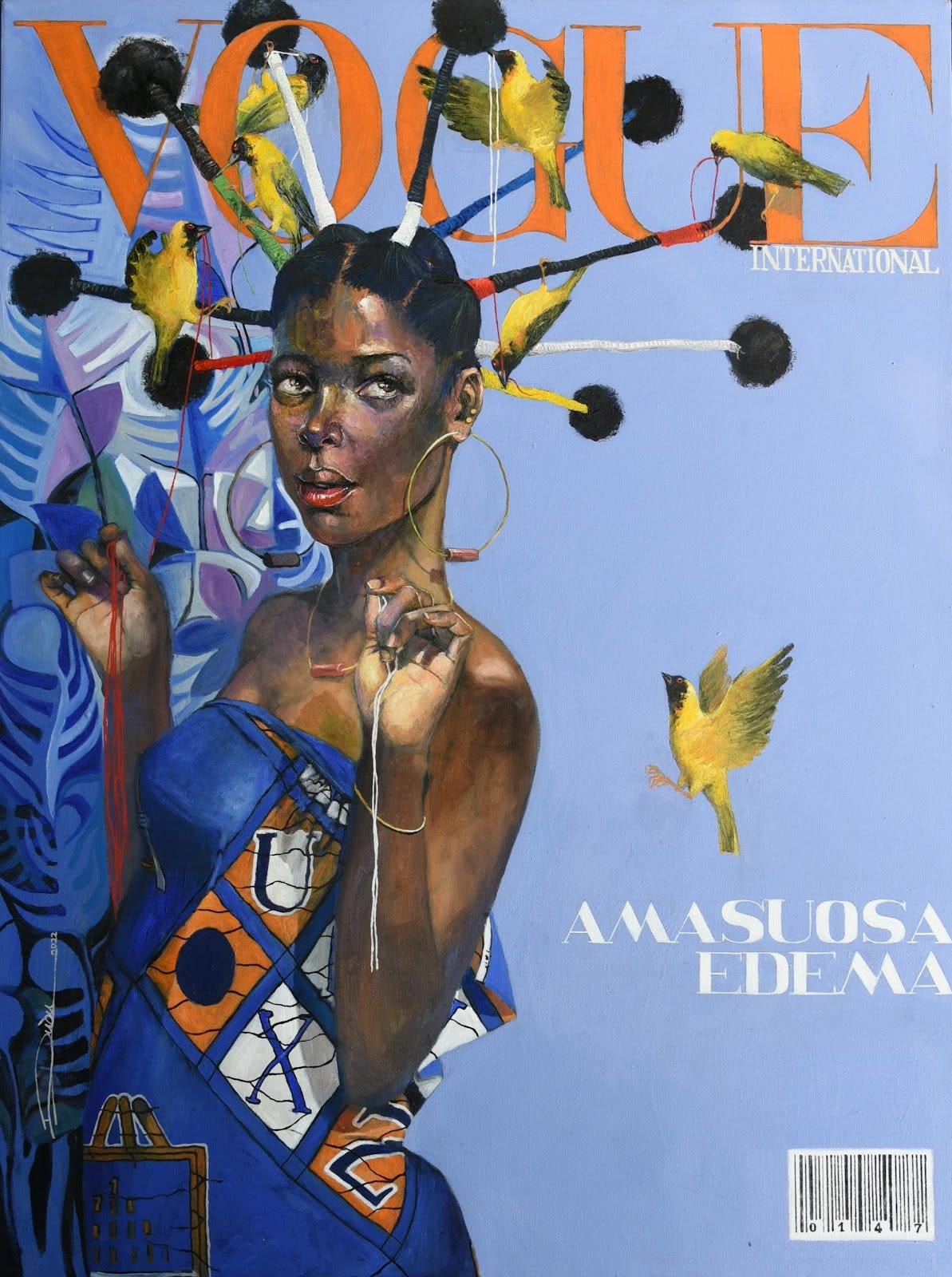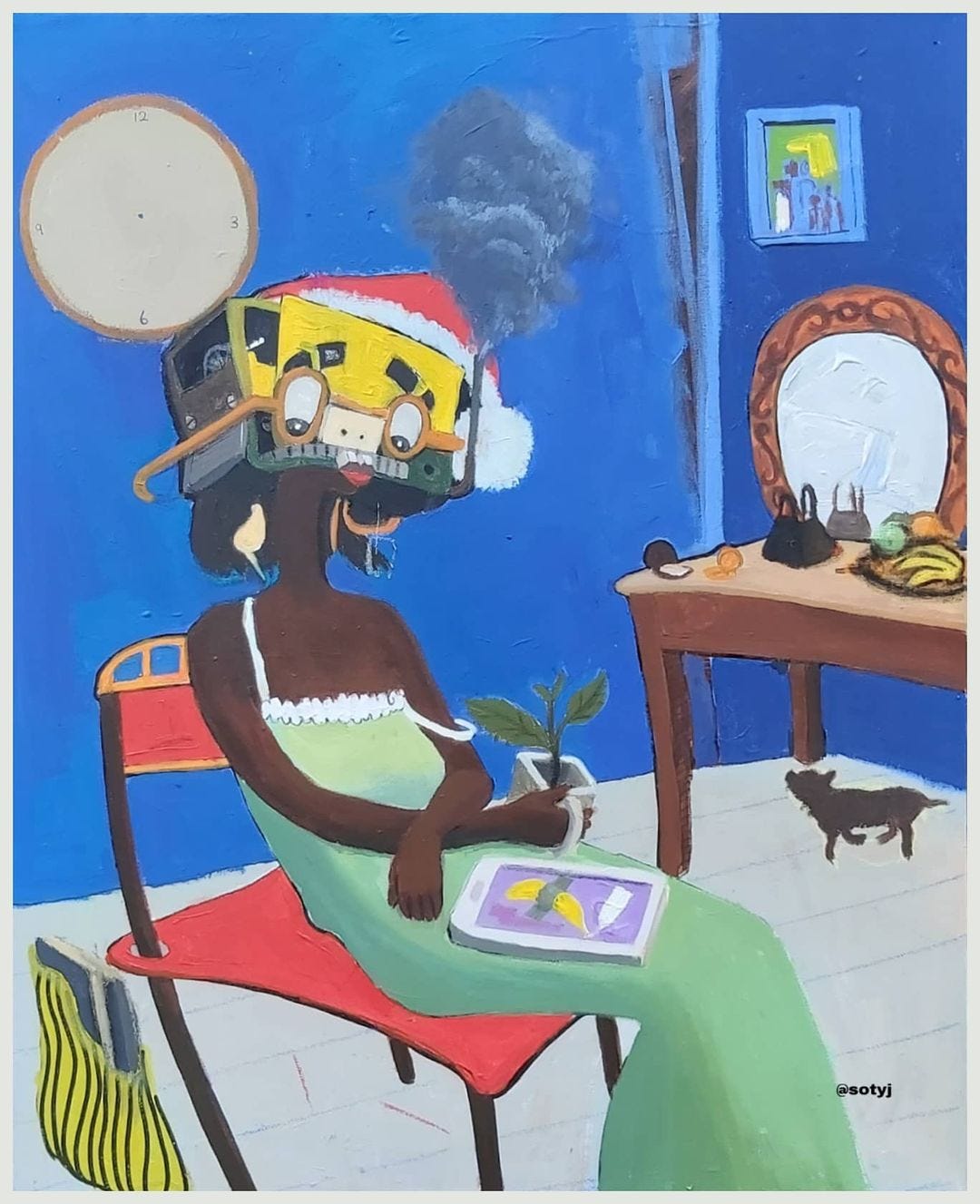The Impact of African Diaspora on Contemporary Art

Arguably, the African Diaspora can be recognised as a digital country, one of its kind. Currently, there are over 200M Africans in its diaspora and they have profoundly impacted contemporary art, creating a bridge of cultural exchange and artistic expression that resonates globally. From the streets of New York to the galleries of Paris, the influence of African heritage is evident in various artistic forms, mediums, and movements.
This global dispersion of African people initially through forced migration during the transatlantic slave trade and later through voluntary migration, has created a dynamic interplay of cultures. This has given rise to unique artistic expressions that reflect the complexities of identity, heritage, and belonging. The African Diaspora has not only enriched the cultural landscapes of host countries but also revitalised the global art scene by challenging traditional narratives and introducing new perspectives.
Artists of African descent have utilised their craft to explore and communicate their experiences, struggles, and triumphs. They often address themes such as colonisation, racism, and resilience. Their works serve as powerful reminders of the past while offering hope and inspiration for the future. The nature of their influence is multifaceted. It spans various art forms including visual arts, music, dance, film, and literature, each contributing to a broader understanding of the human condition.
In this digest, we highlight the significant contributions of the African Diaspora to contemporary art, celebrating the diversity and vibrancy that these artists bring to the global artistic community.
Top Picks of the Week from Our Collection





The Historical Context of the African Diaspora
Understanding the historical context of the African Diaspora is crucial to appreciating its impact on contemporary art.
The transatlantic slave trade—which forcibly displaced millions of Africans—marked the beginning of a significant cultural and demographic shift. This tragic period saw the emergence of new communities in the Americas and the Caribbean, where African traditions blended with local cultures to create unique, hybrid forms of artistic expression. Over time, subsequent waves of voluntary migration from Africa to Europe and the Americas continued to shape the cultural landscape, taking new artistic influences and traditions with them.
The Evolution of African Diasporic Art
African Diasporic art has evolved over the centuries. This reflects the changing realities and identities of people of African descent. Early forms of African-American art, for instance, were deeply rooted in African traditions but adapted to the new cultural contexts of the Americas. These early expressions laid the groundwork for later movements such as the Harlem Renaissance, which celebrated African-American culture and creativity during the early 20th century. This period saw the emergence of influential artists like Jacob Lawrence and Aaron Douglas, whose works depicted the African-American experience and heritage in vibrant, dynamic forms.
1. The Harlem Renaissance: A Catalyst for Change
The Harlem Renaissance was a catalyst for change, playing a significant cultural movement highlighting African-Americans' contributions to the arts. Centred in the Harlem neighbourhood of New York City during the 1920s and 1930s, this movement was characterised by a flourishing of music, literature, and visual arts. Artists such as Langston Hughes, Zora Neale Hurston, and Duke Ellington became prominent figures, using their work to explore themes of identity, race, and social injustice. The Harlem Renaissance not only elevated African-American culture but also challenged prevailing stereotypes and fostered a greater appreciation for the diversity of artistic expression.
2. Contemporary African Diaspora Artists
Today, artists of the African Diaspora continue to push boundaries and challenge conventions in contemporary art. Their work often addresses issues of race, identity, and globalisation, reflecting the complexities of modern life. Notable contemporary artists include Kara Walker, whose provocative silhouettes explore themes of race and gender, and Yinka Shonibare, who uses vibrant fabrics to examine post-colonial identity and hybridity. These artists draw on their heritage while engaging with contemporary issues, creating works that are both deeply personal and universally resonant.
The Influence of African Aesthetics in Global Art
Undeniably, the aesthetics of African art have had a profound influence on global art movements. Elements such as bold colours, geometric patterns, and symbolic motifs have been incorporated into various artistic styles, from modernism to contemporary art. Pablo Picasso, for example, was famously inspired by African masks, which influenced his development of Cubism. This cross-cultural exchange has enriched the global art scene, fostering a greater appreciation for African artistic traditions and their contributions to the world of art.
What Does the Future Hold?
The future of African Diaspora art is bright, with emerging artists continuing to innovate and inspire. As global awareness and appreciation for African Diasporic art grows, these artists are poised to make even greater contributions to the contemporary art scene. Their work will undoubtedly continue to challenge stereotypes, break boundaries, and enrich the global cultural landscape.
The impact of the African Diaspora on contemporary art is profound and far-reaching. From visual arts to music, dance, film, and literature, artists of African descent have shaped and enriched the global artistic community. Their contributions reflect a rich tapestry of cultural exchange, resilience, and creativity, offering unique perspectives that challenge conventional narratives and celebrate the diversity of human experience.
As we deepen our exploration and appreciation of the art produced by the African Diaspora, we gain a deeper understanding of the powerful connections between culture, identity, and artistic expression.
Until our next digest,
invest in African art.




